Every educational institution recognizes the importance of celebrating student achievement. Recognition validates effort, reinforces positive behaviors and character development, creates aspirational role models for peers, strengthens student connections to schools and learning, and builds the positive culture necessary for academic success. Student awards programs provide structured frameworks for consistent, visible acknowledgment that keeps achievement at the forefront of school communities.
Yet many schools struggle with awards programs that feel stale, exclusive, or disconnected from what truly matters to students. The same small group of high-achieving students receives recognition year after year while others never experience celebration. Selection criteria remain unclear or inconsistently applied. Awards ceremonies become tedious obligations rather than genuine celebrations. Traditional plaques and certificates collect dust in storage rooms, forgotten shortly after presentation.
Effective student awards programs in 2025 require fresh approaches that balance tradition with innovation, honor diverse types of excellence, engage digital-native students through modern platforms, create inclusive systems where recognition feels achievable for all students, and preserve recognition in ways that inspire current and future students. This guide examines every dimension of successful student awards programs from establishing meaningful categories and transparent selection processes to leveraging interactive digital displays and measuring long-term program impact.
Understanding the Psychology of Student Recognition
Before designing specific program elements, understanding what makes recognition truly effective helps ensure efforts create genuine motivational impact rather than empty rituals that fail to inspire.
How Recognition Influences Student Motivation
Recognition powerfully influences student motivation, behavior, identity development, and academic engagement when implemented thoughtfully. Educational psychology research consistently demonstrates several key principles about effective recognition.
Recognition Must Balance Standards and Accessibility: Awards programs face inherent tension between maintaining meaningful standards and creating accessible opportunities. Recognition requiring impossible standards that only the same few students can achieve becomes discouraging rather than motivating for most students. Conversely, indiscriminate recognition lacking substantive standards devalues genuine achievement. Effective programs establish clear, meaningful criteria while creating multiple pathways enabling diverse students to earn recognition through different forms of excellence.
Recognition Should Celebrate Process Alongside Product: Research distinguishes between fixed mindsets believing abilities are innate and unchangeable, and growth mindsets believing abilities develop through effort. Recognition emphasizing natural talent paradoxically undermines motivation by suggesting success depends on innate gifts rather than work students can control. More effective recognition celebrates effort, strategies, persistence, improvement, and processes leading to success. When students understand that recognized peers achieved success through approaches they could employ, recognition becomes inspirational rather than discouraging.

Recognition Patterns Communicate Institutional Values: Public recognition signals what schools value most. When recognition consistently focuses only on academic test scores or athletic championships, schools communicate that nothing else matters comparably. When recognition celebrates diverse achievements across academics, character, arts, athletics, service, leadership, and other domains, schools demonstrate that excellence takes many forms. Recognition patterns create social norms influencing what students aspire to achieve and how they define personal success.
Recognition Timing Significantly Impacts Effectiveness: Immediate recognition when achievements occur carries far greater motivational impact than delayed recognition weeks or months later. Real-time or near-real-time acknowledgment demonstrates that schools actively notice accomplishments and value them enough to celebrate quickly. Modern digital recognition systems enable timely acknowledgment impossible with traditional approaches requiring physical plaque production and installation.
Different Types of Achievement Deserving Recognition
Comprehensive awards programs celebrate multiple dimensions of student success rather than narrow definitions focusing exclusively on grades or test scores.
Academic Excellence and Scholarly Achievement: Traditional academic honors including grades, test scores, academic competitions, subject-specific accomplishments, research projects, and intellectual contributions. Academic recognition validates that schools are fundamentally educational institutions where learning matters most. However, academic recognition should represent one component of comprehensive programs, not the exclusive focus.
Academic Growth and Improvement: Significant progress and development even when absolute achievement levels remain moderate. Improvement recognition proves particularly meaningful for students overcoming learning challenges, rebuilding from previous struggles, or developing skills from lower starting points. Growth-oriented awards create recognition opportunities for students who might never achieve highest absolute performance levels but demonstrate remarkable development.
Character, Integrity, and Citizenship: Demonstration of values like integrity, responsibility, respect, kindness, courage, perseverance, and ethical behavior. Character recognition helps schools shape not just what students know but who they become as people. During formative years, character development deserves emphasis equal to academic growth. Schools preparing students for life beyond graduation must recognize qualities enabling personal and professional success.
Leadership and Positive Influence: Taking initiative, organizing others toward positive goals, accepting responsibility, mentoring peers, and positively influencing school culture. Leadership recognition helps identify and develop future community leaders while validating students who contribute to collective success beyond individual achievement. Leadership emerges in countless forms—from student government to informal peer mentoring—all worthy of acknowledgment.
Service, Volunteerism, and Community Contribution: Volunteer work, community service, helping peers, and contributions making schools or broader communities better. Service recognition reinforces that giving back and helping others represents valued behavior schools want to encourage. In increasingly individualistic culture, recognizing service helps develop commitment to collective welfare.
Positive Behavior and Citizenship: Consistent demonstration of expected behaviors, following guidelines, treating others respectfully, contributing to positive classroom and school environments, and exemplifying school values. Behavior recognition supports schoolwide positive behavior systems while acknowledging students who make schools more pleasant for everyone.
Arts, Creativity, and Cultural Expression: Excellence in visual arts, performing arts, music, theater, creative writing, dance, or other creative expressions. Arts recognition ensures students with artistic talents receive acknowledgment equal to those excelling athletically or academically. Creative achievement deserves celebration alongside other forms of excellence.
Athletic Achievement and Sportsmanship: Sports participation, skill development, competitive success, sportsmanship, team contributions, and dedication to athletic excellence. Athletic recognition celebrates physical development and team collaboration while honoring the commitment required for competitive success. Recognition should celebrate sportsmanship and character alongside victories.

Attendance, Punctuality, and Commitment: Regular attendance and promptness demonstrating commitment to education. Attendance recognition acknowledges students and families who prioritize consistent school participation despite challenges making attendance difficult. Perfect attendance represents significant achievement worthy of celebration.
Resilience and Overcoming Adversity: Perseverance through significant personal challenges, maintaining positive attitudes despite obstacles, and demonstrating remarkable strength. Some students’ greatest achievements may not appear on transcripts but demonstrate character and determination deserving recognition. Schools should acknowledge that success looks different given varying circumstances students navigate.
Effective student awards programs create recognition categories across these dimensions rather than focusing exclusively on traditional academic metrics.
Designing Effective Awards Categories and Selection Criteria
Awards categories and selection criteria determine whether programs feel fair, inclusive, and meaningful or become predictable exercises benefiting only certain student groups.
Establishing Comprehensive Award Categories
Multiple Recognition Pathways: Rather than single awards that most students can never achieve, create multiple categories enabling diverse students to excel in different areas. Consider categories such as:
- Academic Excellence Awards (subject-specific and overall achievement)
- Academic Improvement Awards (most growth and progress)
- Character and Integrity Awards (demonstrating core values)
- Leadership Awards (student government, peer mentoring, initiative)
- Service Awards (community service, volunteerism, helping others)
- Arts Awards (visual arts, performing arts, music, theater, creative writing)
- Athletic Awards (sport-specific achievement, sportsmanship, dedication)
- Citizenship Awards (positive behavior, respect, responsibility)
- Special Recognition Awards (overcoming adversity, unique contributions)
Multiple category approaches dramatically expand opportunities for meaningful recognition while celebrating the reality that students excel in different ways.
Grade-Level and Developmental Considerations: Consider separate recognition for different grade levels accounting for developmental differences and appropriate expectations. Elementary recognition might emphasize behavior and foundational skills. Middle school awards could focus on character development during crucial adolescent years. High school recognition might connect to college and career readiness. Grade-level differentiation ensures recognition remains developmentally appropriate and achievable.
Department and Subject-Specific Recognition: Beyond general academic awards, consider subject-specific recognition honoring excellence in mathematics, science, English, social studies, world languages, fine arts, physical education, career and technical education, and other disciplines. Subject-specific awards ensure diverse academic talents receive acknowledgment and prevent single subjects from dominating recognition.
Creating Transparent Selection Criteria
Written Documentation: Create formal written documents clearly specifying what qualifies students for different awards. Publish criteria publicly ensuring students, families, and staff understand exactly what earns recognition. Transparent criteria prevent perceptions that awards depend on favoritism, popularity, or arbitrary decisions rather than genuine accomplishment.
Measurable Standards Where Feasible: Where possible, establish quantifiable criteria reducing subjectivity: minimum GPA requirements, percentage improvement targets, attendance thresholds, service hour minimums, specific competition placements, or documented behavioral standards. Measurable standards make awards feel more objective and fair while simplifying selection processes and documentation.
Qualitative Guidelines for Subjective Awards: Some valuable qualities resist simple quantification. For character-based or citizenship awards, develop detailed descriptions with concrete behavioral examples illustrating what qualities look like practically. Specific examples help nominators and selectors apply criteria consistently across different students and situations.
Nomination and Selection Processes: Establish clear processes for how students become candidates for awards. Options include:
- Teacher and staff nominations based on observation and documentation
- Student self-nominations with supporting materials explaining qualifications
- Peer nominations for certain awards (with appropriate oversight)
- Automatic consideration based on quantitative data (grades, attendance, test scores)
- Committee review of all eligible candidates against established criteria
Multiple nomination sources help ensure recognition opportunities don’t depend solely on visibility to specific teachers or administrators.

Ensuring Equity and Inclusivity
Monitoring Recognition Distribution: Track awards patterns over time to identify whether certain student groups receive disproportionate recognition. Analyze distribution across:
- Demographics (race, ethnicity, gender, socioeconomic status)
- Academic programs (general education, special education, gifted programs, English learners)
- Grade levels and age groups
- Activity participation patterns
Data revealing recognition gaps enables intentional efforts ensuring all students have reasonable pathways to awards through inclusive program design.
Avoiding Unintentional Bias: Selection criteria and processes can inadvertently favor students with certain advantages. Consider whether criteria require resources, opportunities, or support not available to all students. For example, service hour requirements may disadvantage students working part-time jobs or providing family care. Extracurricular leadership requirements may exclude students with transportation challenges or family obligations. Thoughtful criteria account for varying student circumstances.
Creating Multiple Tiers: Consider tiered recognition systems acknowledging different achievement levels. Honors, high honors, and highest honors systems allow more students to receive meaningful recognition appropriate to their accomplishment levels. Tiered approaches can reduce all-or-nothing dynamics where students receive either top awards or nothing.
Modern Approaches to Awards Presentation and Preservation
How schools present and preserve recognition determines whether awards programs create genuine motivational impact or feel like forgotten rituals with minimal lasting influence.
Beyond Paper Certificates: Engaging Recognition Experiences
Traditional awards programs relied heavily on printed certificates handed out at year-end assemblies, briefly acknowledged before being filed away and forgotten. Modern recognition should incorporate multiple touchpoints creating deeper, more lasting impact.
Interactive Digital Recognition Displays: Digital touchscreen displays provide engaging, permanent recognition platforms that resonate with digital-native students while preserving awards history for years to come. Digital displays enable:
- Comprehensive award recipient profiles with photographs and achievement descriptions
- Searchable databases allowing visitors to find specific students, years, or award categories
- Video content including acceptance speeches, testimonials, and celebration footage
- Historical archives showing decades of award recipients and achievement evolution
- Interactive exploration where students can browse peers’ accomplishments
- Easy annual updates adding new recipients without physical space constraints
Solutions like Rocket Alumni Solutions provide purpose-built platforms designed specifically for educational recognition, making implementation straightforward for schools without extensive technical expertise.
Meaningful Awards Ceremonies: While digital preservation matters, live recognition ceremonies create important celebration moments. Effective ceremonies include:
- Specific achievement descriptions rather than just reading names
- Opportunities for award recipients to address audiences or share reflections
- Teacher or nominator remarks explaining why students earned recognition
- Professional presentation creating special experiences rather than rushed announcements
- Family involvement allowing parents to celebrate achievements
- Photography and videography documenting the celebration for digital displays
Ceremonies should balance comprehensiveness with engagement, perhaps creating multiple focused events rather than single marathon assemblies where individual recognition becomes brief and unmemorable.
Social Media and Digital Communication: Strategic social media recognition amplifies acknowledgment beyond school walls while engaging families and communities:
- Individual posts celebrating each award recipient with photos and descriptions
- Video compilations featuring highlights from awards ceremonies
- Stories showcasing behind-the-scenes preparation and celebration moments
- Family and community congratulations through comments and shares
- Alumni engagement showing graduates celebrating current student success
Ensure appropriate permissions and privacy protections before featuring students publicly. Many schools find that social media recognition generates tremendous community engagement and pride.
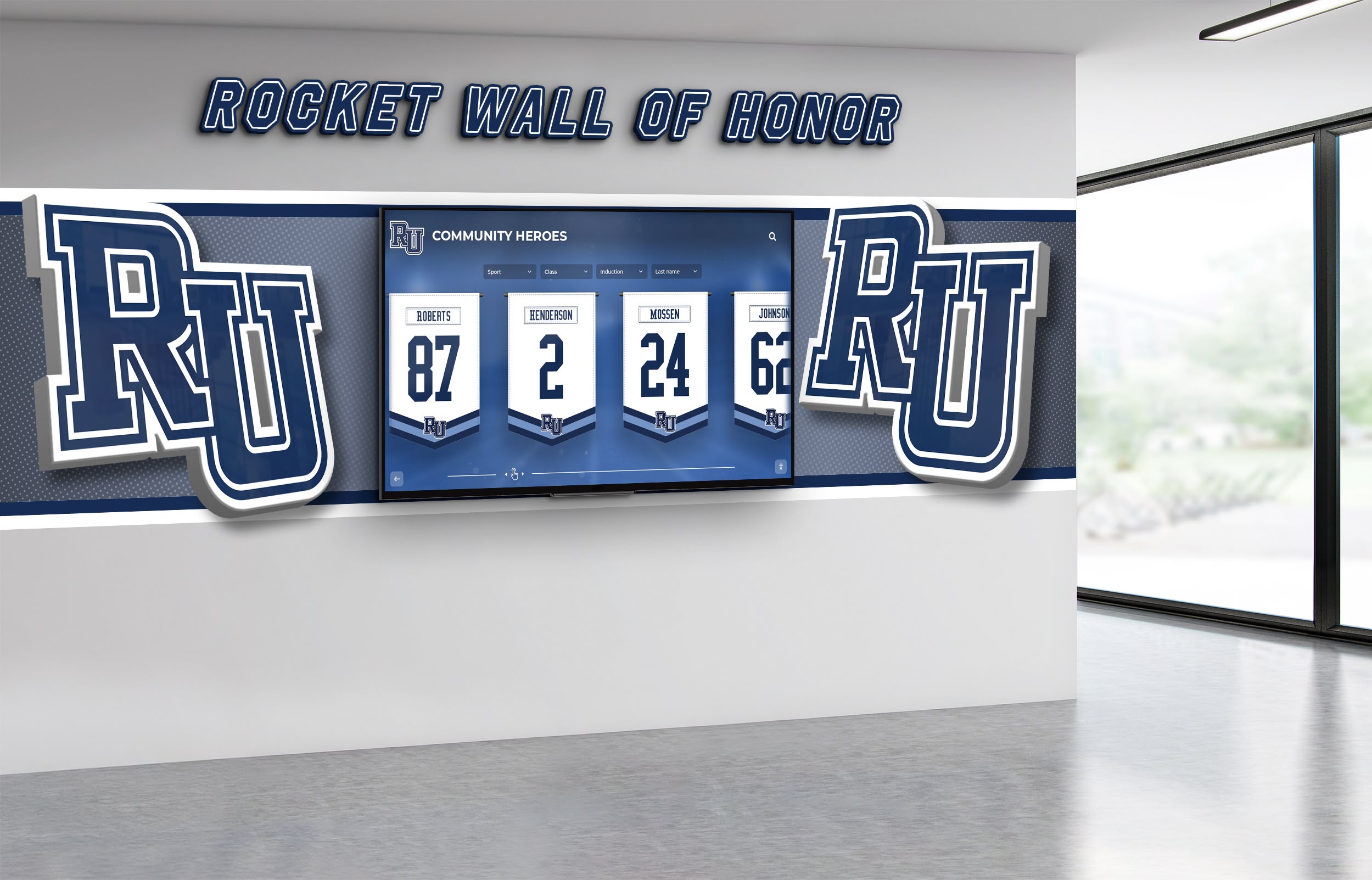
Physical Recognition Displays: Traditional displays retain value when executed thoughtfully:
- Trophy cases highlighting recent award recipients alongside school history
- Hallway displays celebrating current year achievements in high-traffic areas
- Classroom recognition boards maintained by teachers throughout the year
- Department-specific displays honoring subject area excellence
However, digital recognition walls offer advantages including unlimited space, easy annual updates, richer multimedia content, and better engagement that traditional static displays cannot match.
Creating Lasting Recognition Through Digital Preservation
One of the most significant failures of traditional awards programs is poor preservation. Certificates go home and disappear into boxes. Trophy cases overflow, forcing removal of older recognition. Yearbook coverage provides brief documentation that few revisit. Within years, detailed memory of award recipients fades except among immediate families.
Digital recognition displays solve preservation challenges while creating valuable historical documentation. Every award recipient can be honored permanently with comprehensive profiles that remain accessible indefinitely. Students, alumni, families, and community members can explore recognition history across decades, discovering inspiration and connection. Future students can see that achievement is recognized and celebrated, motivating their own pursuit of excellence.
Digital preservation also enables recognition to extend beyond the immediate award year. Recognition displays become year-round resources showcasing student excellence, not just momentary acknowledgments during awards ceremonies.
Leveraging Technology for Enhanced Recognition Impact
Modern technology transforms how schools implement, communicate, and preserve student awards programs while reducing administrative burden and increasing engagement.
Content Management Systems for Efficient Administration
Professional recognition platforms provide comprehensive content management systems simplifying program administration. Key features include:
- Intuitive interfaces allowing easy profile creation and updates by non-technical staff
- Template systems ensuring visual consistency across years and categories
- Media libraries organizing photographs, videos, and documents efficiently
- Workflow tools managing nomination, review, and selection processes
- Communication systems sending notifications to students, families, and staff
- Analytics tracking engagement patterns and recognition distribution
- Archive functionality preserving complete historical records
Professional touchscreen software designed specifically for educational recognition streamlines implementation while providing engaging experiences capturing student and community attention.
Reducing Administrative Burden: Traditional awards programs require significant manual effort for collecting nominations, coordinating selection committee reviews, creating certificates and plaques, organizing ceremonies, communicating with families, and documenting awards history. Digital platforms automate many processes, dramatically reducing time burden while improving consistency and quality.
Analytics and Continuous Improvement
Digital recognition systems provide valuable data enabling program assessment and refinement:
- Recognition distribution patterns identifying gaps or inequities
- Engagement metrics showing how students and visitors interact with displays
- Most-viewed award categories and recipients revealing high-interest content
- Search patterns indicating what information visitors seek
- Time-based engagement showing when displays receive most attention
Data-informed decisions help optimize programs ensuring they achieve intended goals while addressing unintended gaps or biases.
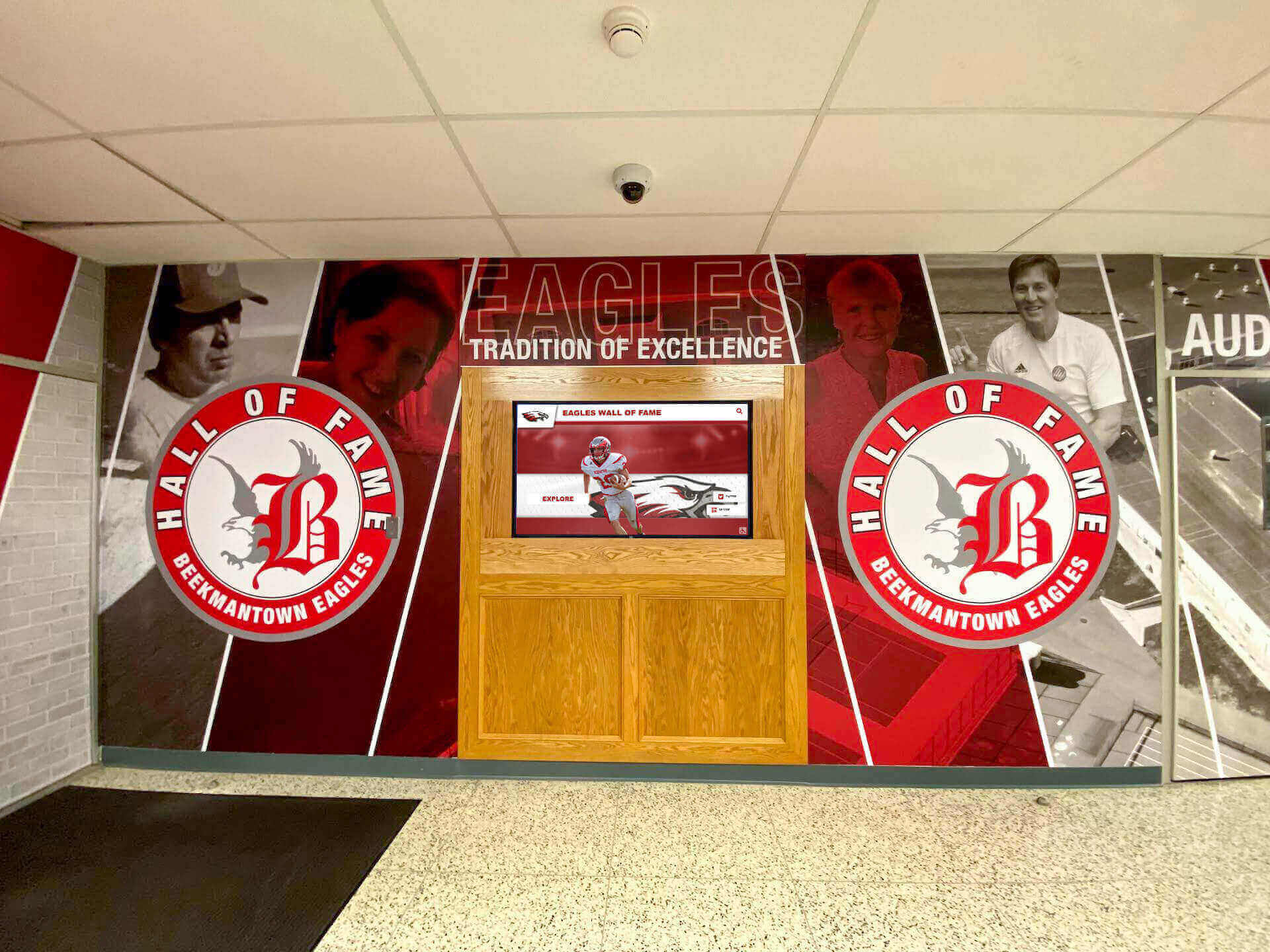
Integration with Other School Systems
Sophisticated implementations connect awards programs to broader school technology ecosystems:
- Student information systems providing academic data for automatic eligibility determination
- Digital asset management systems organizing photographs and videos across recognition programs
- Website integration publishing awards content automatically
- Social media management tools enabling coordinated communication across platforms
- Alumni databases maintaining current information about award recipients after graduation
Integration reduces duplicate data entry while ensuring accuracy and consistency across school communication channels.
Special Recognition Programs Worth Considering
Beyond traditional academic and citizenship awards, consider these specialized recognition programs addressing specific needs and opportunities.
Student of the Month Programs
Monthly recognition provides more frequent acknowledgment than annual awards, creating consistent visibility and motivation throughout school years. Students of the Month programs work particularly well when featuring multiple categories allowing different students to excel each month rather than repeatedly recognizing the same individuals.
Monthly recognition also provides excellent content for maintaining engagement with digital recognition displays, with fresh honorees featured each month while historical recipients remain accessible through search and archives.
Academic Excellence and Honor Roll Recognition
Traditional honor roll recognition celebrates academic achievement at regular intervals throughout school years. Consider multiple recognition levels:
- Honor Roll (meeting standard GPA threshold)
- High Honor Roll (higher GPA requirement)
- Principal’s List (highest academic achievement)
Subject-specific academic awards at year-end honor excellence in particular disciplines, ensuring diverse academic talents receive recognition beyond overall GPA.
Character Education Awards
Many schools implement character education programs emphasizing specific virtues like respect, responsibility, integrity, perseverance, courage, and compassion. Character awards explicitly tied to these values reinforce that schools prioritize who students become as people, not just what they know academically.
Character recognition helps make abstract values concrete by highlighting students demonstrating character qualities in action, providing peer role models more influential than adult lectures about values.
Senior Superlatives and Legacy Awards
High school senior awards celebrating students’ complete high school experiences create meaningful recognition as students prepare for graduation. Traditional superlatives might include:
- Most Likely to Succeed
- Best School Spirit
- Most Inspirational
- Most Improved
- Outstanding Leadership
- Community Service Excellence
Legacy awards can honor seniors’ cumulative contributions to specific programs, departments, activities, or school culture—recognition that acknowledges sustained commitment rather than single-year achievement.
Improvement and Growth Recognition
Awards specifically honoring improvement and growth create opportunities for students who might never achieve highest absolute performance levels but demonstrate remarkable development. Improvement awards prove particularly meaningful for:
- Students overcoming learning disabilities or challenges
- English learners developing language proficiency
- Students rebuilding academic performance after struggles
- Late bloomers who find motivation and direction
Growth recognition reinforces that effort and development matter as much as current achievement levels, supporting growth mindset development.
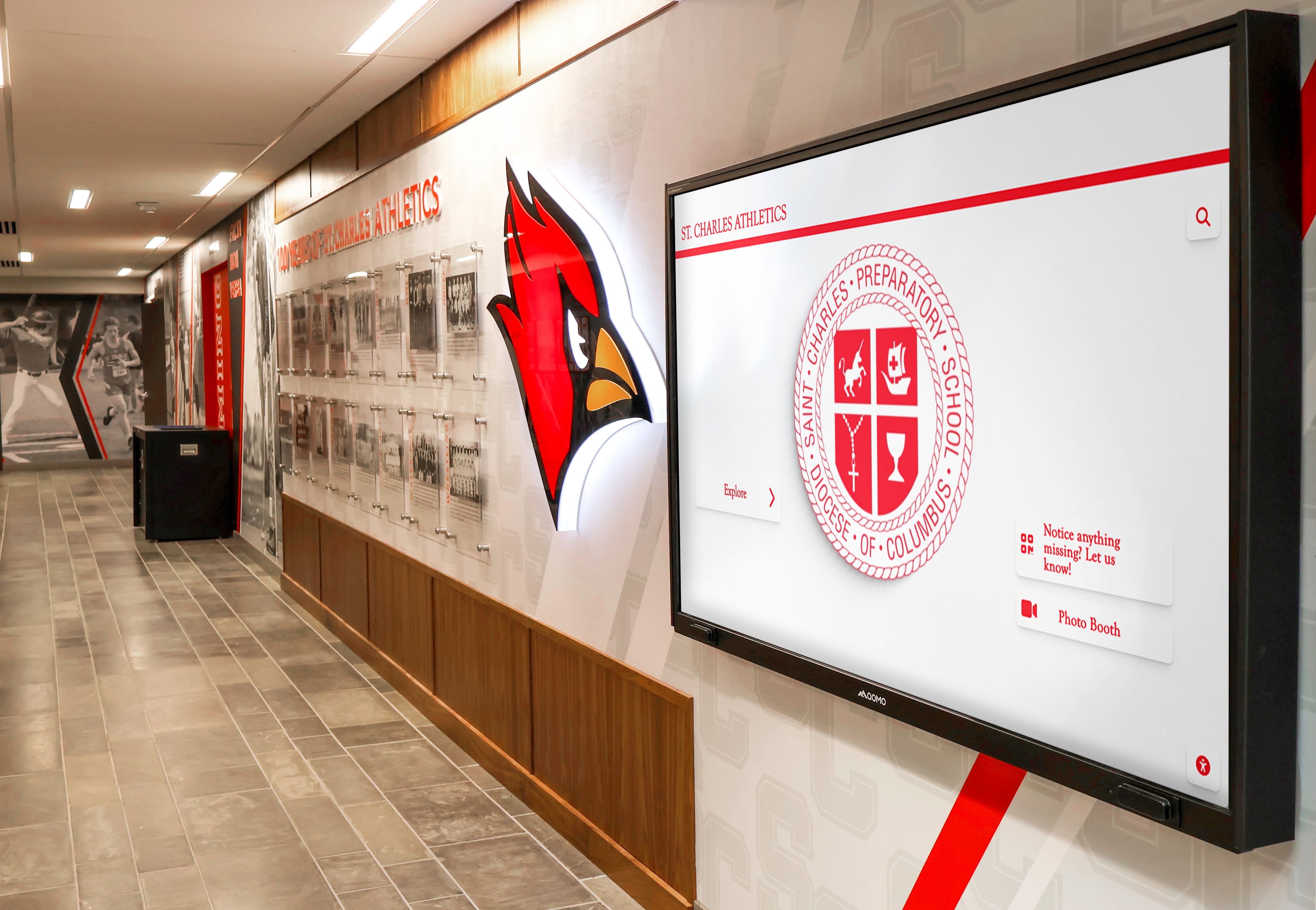
Service and Volunteerism Awards
Recognizing community service, volunteer work, and contributions to collective welfare helps develop civic engagement and social responsibility. Service awards might honor:
- Cumulative volunteer hours over school careers
- Significant impact through specific service projects
- Leadership in service organizations
- Regular participation in community improvement
- Tutoring and peer support contributions
Service recognition demonstrates that schools value contributions to others and communities, not just individual achievement.
Fine Arts and Creative Achievement
Comprehensive awards programs ensure arts excellence receives recognition equal to academic and athletic achievement. Consider awards for:
- Visual arts (painting, drawing, sculpture, digital art)
- Performing arts (theater, dance, performance art)
- Music (vocal, instrumental, composition)
- Creative writing (poetry, fiction, journalism)
- Media arts (film, photography, graphic design)
Arts recognition celebrates creative talents and expressions that enrich school culture and student development but often receive less attention than academic and athletic programs.
Athletic Achievement and Sportsmanship
Athletic awards celebrate competitive success, skill development, dedication, and sportsmanship. Beyond traditional MVP and championship recognition, consider:
- Most Improved Athlete
- Coaches Award (effort, attitude, leadership)
- Sportsmanship Award (character, integrity, respect)
- Team Captain Recognition (leadership)
- Academic All-Conference (balancing athletics and academics)
Athletic recognition should celebrate character and development alongside competitive achievement, reinforcing that sports teach life lessons beyond winning games.
Creating Inclusive Recognition Systems
Truly effective awards programs ensure all students see realistic pathways to recognition through inclusive design addressing diverse needs and circumstances.
Accommodating Special Populations
Special Education Students: Students receiving special education services deserve equal recognition opportunities. Consider whether criteria account for individual education plans (IEPs) and accommodations. Can progress toward IEP goals earn recognition comparable to traditional academic achievement? Do behavioral and functional skill improvements receive acknowledgment? Ensure selection committees include special education representatives understanding these students’ circumstances and growth.
English Learners: Students developing English proficiency face unique challenges. Does language proficiency growth receive recognition comparable to native English speakers’ academic achievement? Do multilingual skills earn celebration? Can students receive recognition in ways not entirely dependent on English language mastery?
Economically Disadvantaged Students: Do awards criteria require resources, opportunities, or support not accessible to all students? Service hour requirements may disadvantage students working to support families. Extracurricular involvement expectations may exclude students with transportation limitations or family care responsibilities. Summer program participation might assume family resources for fees or transportation. Thoughtful criteria ensure recognition pathways remain accessible regardless of economic circumstances.
Students with Different Learning Styles: Traditional academic measures emphasizing test-taking and written work may not reflect the full range of intelligence and ability. Consider whether awards adequately recognize kinesthetic learners, visual-spatial thinkers, interpersonal intelligence, and other strengths beyond linguistic and logical-mathematical abilities traditionally emphasized in academic settings.
Geographic and Cultural Considerations
Schools serving diverse communities should ensure recognition reflects and honors cultural diversity:
- Are selection committees culturally diverse with perspectives from different backgrounds?
- Do award categories celebrate contributions and achievements valued across cultures?
- Does recognition appropriately acknowledge students navigating multiple cultural contexts?
- Are ceremonies and celebrations culturally sensitive and inclusive?
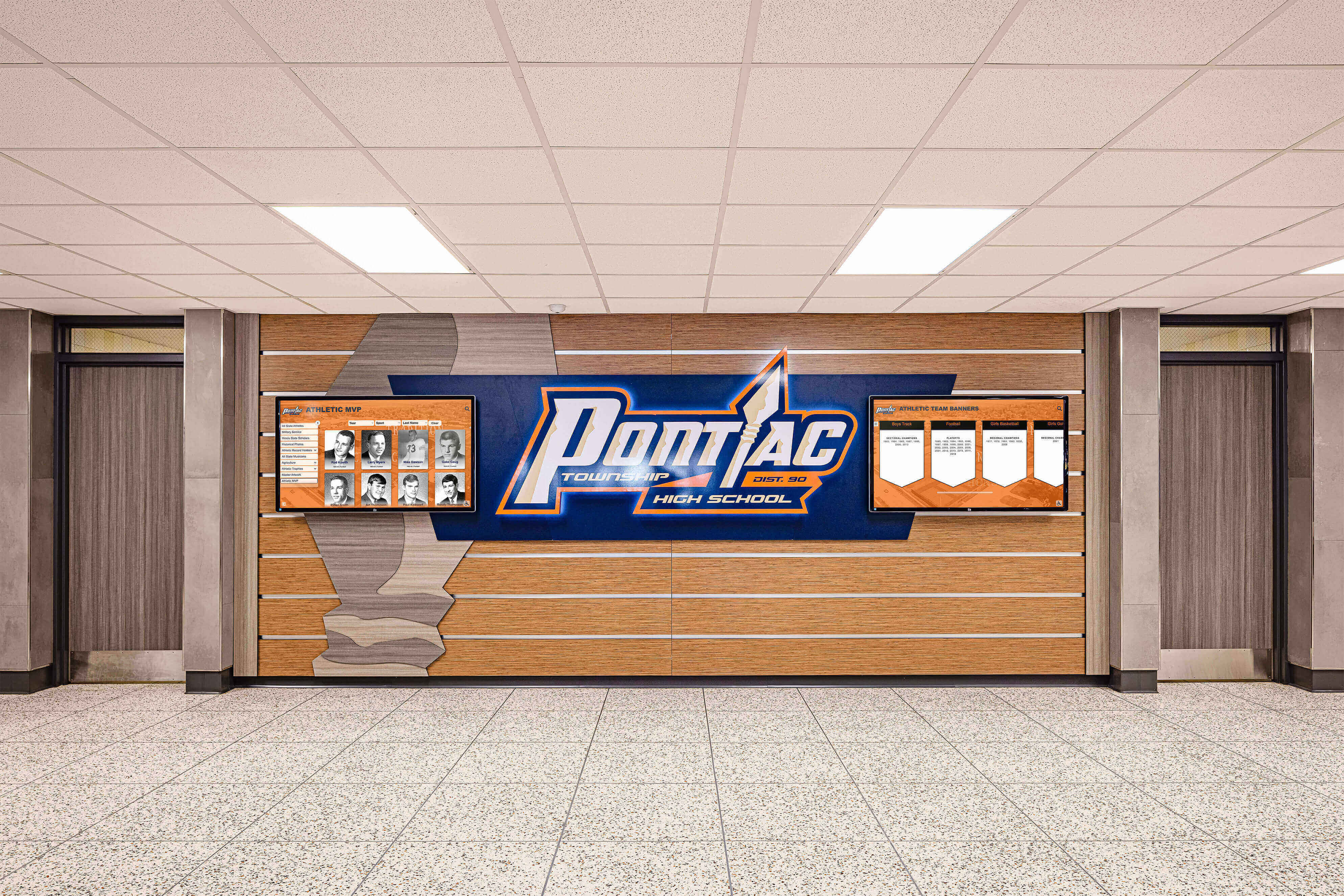
Addressing Socioeconomic Equity
Recognition programs can inadvertently disadvantage economically disadvantaged students. Ensure equity by:
- Eliminating fees or costs associated with award ceremonies or recognition
- Providing professional photography for all recipients rather than expecting families to arrange photos
- Considering transportation support for evening ceremonies when needed
- Avoiding awards dependent on access to expensive resources, programs, or opportunities
- Creating recognition pathways accessible through effort and character rather than resources
Implementation Planning and Launch
Successful student awards programs require thoughtful planning ensuring sustainable, effective implementation that continues across leadership changes and competing priorities.
Planning Timeline
Phase 1: Assessment and Goal Setting (Months 1-2):
- Form awards program planning committee with diverse stakeholders
- Research existing awards programs and identify what’s working or needs improvement
- Survey students, staff, families, and alumni about recognition priorities
- Define clear program goals and intended outcomes
- Review recognition distribution data identifying current gaps or inequities
Phase 2: Program Design (Months 2-4):
- Establish award categories reflecting comprehensive achievement types
- Develop selection criteria and documentation for each category
- Create nomination and selection processes with clear timelines
- Design communication strategies for students, families, and staff
- Determine ceremony formats and scheduling
- Develop program documentation and staff training materials
Phase 3: Technology Selection (Months 3-4):
- Evaluate digital recognition display options if implementing technology solutions
- Compare platforms, features, costs, and vendor support
- Select recognition software and hardware appropriate to needs and budget
- Plan installation locations, network connectivity, and technical requirements
- Coordinate with IT staff on implementation details
Phase 4: Content Development (Months 4-5):
- Establish photography standards and workflows for award recipients
- Create content templates ensuring visual consistency
- Develop media libraries and organizational systems
- Train staff on content management and system operation
- Prepare historical content if including past award recipients
Phase 5: Pilot and Refinement (Month 5):
- Conduct pilot with small group before full launch
- Gather feedback from participants
- Identify and address logistical or process challenges
- Refine procedures based on pilot experiences
- Make necessary adjustments before school-wide implementation
Phase 6: Full Launch (Month 6+):
- Announce program school-wide with clear communication to all stakeholders
- Implement nomination and selection processes according to established timelines
- Conduct first awards ceremony celebrating inaugural recipients
- Launch digital recognition displays if implementing technology
- Monitor implementation and gather ongoing feedback
- Make iterative improvements based on experience and data
Plan minimum six months from initial planning to full program launch allowing thorough development, stakeholder engagement, and system preparation.
Building Stakeholder Support
Administrative Leadership: Programs require visible administrative support including resource allocation, staff time provision, public endorsement and promotion, participation in awards ceremonies and events, and sustained commitment across years. Leadership commitment signals that recognition matters institutionally and ensures programs survive budget pressures and competing priorities.
Teacher and Staff Buy-In: Teachers and staff typically implement most awards activities through nominations, documentation, ceremony participation, and student encouragement. Build buy-in by:
- Involving teachers in program design ensuring practical workability
- Creating clear, efficient processes minimizing time burden
- Providing recognition of staff effort and contributions
- Demonstrating that recognition improves school climate and student motivation
- Training staff on nomination processes and criteria application
Student Engagement: Students are ultimate recognition recipients and should influence program design:
- Gather student input about meaningful recognition categories and criteria
- Include student representatives on planning committees where appropriate
- Communicate clearly helping students understand award pathways and expectations
- Ensure recognition feels authentic and meaningful from student perspectives
- Create opportunities for peer nominations in appropriate categories
Family Communication: Help families understand and support awards programs through:
- Clear explanation of program purposes, categories, and selection processes
- Information about how students can earn different awards
- Invitations to participate in awards ceremonies and celebrations
- Regular communication celebrating recognized students
- Opportunities for family input on program development and refinement
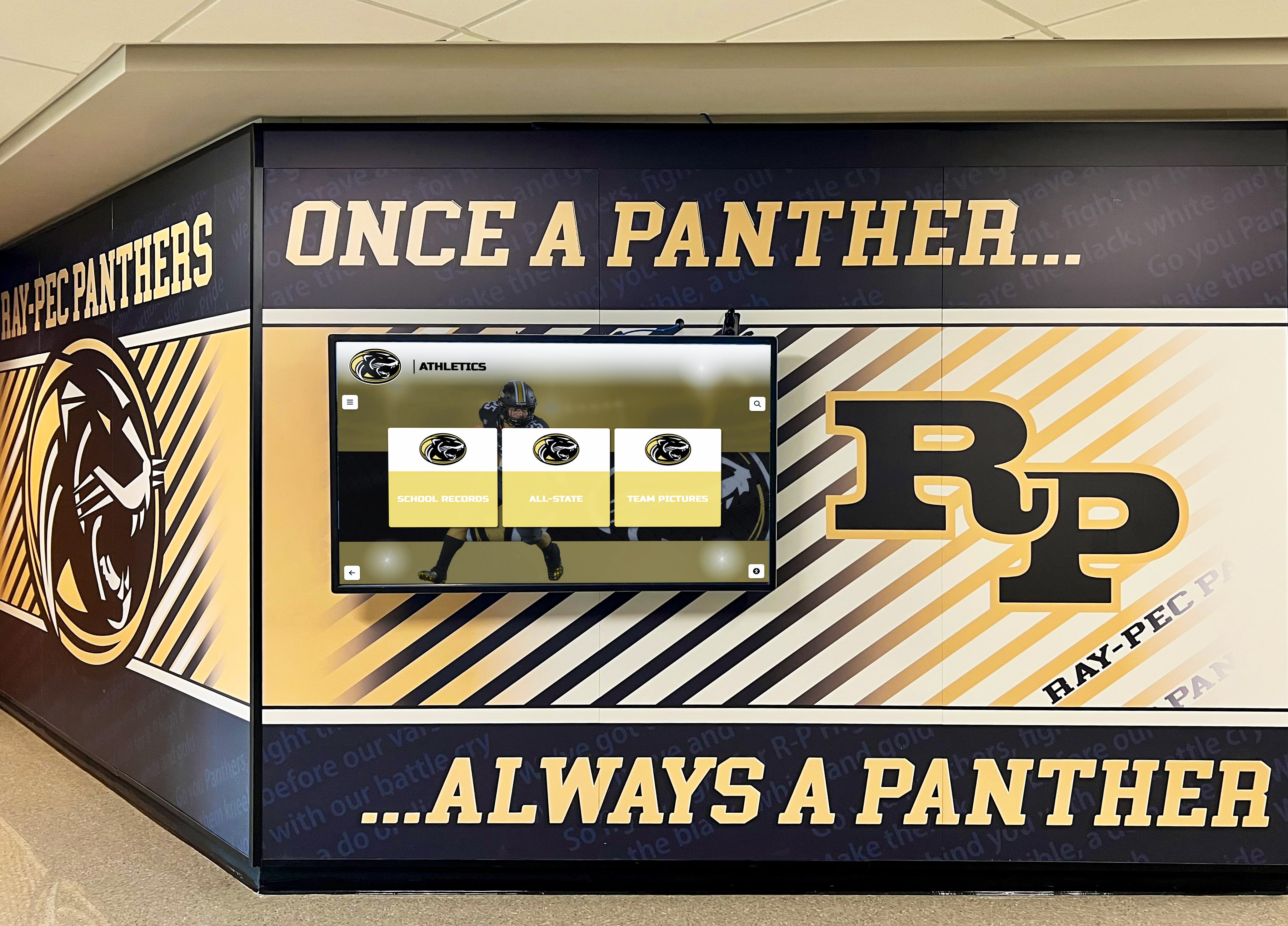
Budget and Resource Planning
Initial Implementation Costs:
- Technology platform licensing or purchase if using digital recognition displays
- Display hardware including touchscreens, mounts, and network equipment
- Professional photography equipment or services for award recipient photos
- Ceremony costs including venue, equipment, programs, refreshments
- Award materials including certificates, medals, trophies, or plaques
- Staff training and program development time
- Launch event and promotional materials
Ongoing Operating Costs:
- Annual software licensing or subscription fees for digital platforms
- Recognition materials for new award recipients each year
- Photography and content development time
- Ceremony expenses for annual events
- Communication and promotion
- Program coordination staff time
- Periodic hardware maintenance or replacement
Funding Sources:
- School operating budgets allocated to recognition programs
- Parent-teacher organization support and fundraising
- Community or business sponsorships and partnerships
- Education foundation grants
- Alumni association contributions
- Title funds supporting positive school culture initiatives
- Donations and memorial giving
Cost-Effective Approaches: Schools with limited budgets can implement effective programs through:
- Phased implementation starting with core awards and expanding over time
- Hybrid approaches combining some digital and traditional elements
- Student journalism or media classes creating recognition content as academic work
- Volunteer photographers from parent or community volunteers
- Simple but meaningful ceremony formats without expensive production
- Free or low-cost platforms for basic digital recognition
Technology solutions like digital recognition displays often prove cost-effective long-term by reducing ongoing material costs while providing richer, more engaging recognition experiences than traditional paper-based approaches.
Measuring Success and Continuous Improvement
Effective awards programs require ongoing assessment ensuring they achieve intended purposes while adapting based on experience, feedback, and changing needs.
Defining Success Metrics
Participation and Distribution Metrics:
- Number and diversity of nominations received across categories
- Percentage of student body receiving recognition annually
- Distribution of awards across grades, demographics, programs, and categories
- Nomination sources (teachers, students, parents, administrators)
- Selection committee participation and engagement
Student Outcome Indicators: While direct attribution proves difficult, monitor trends potentially connected to recognition programs:
- Student attendance rates and tardiness patterns
- Behavioral referral frequency and severity
- Academic achievement trends across student populations
- Activity and extracurricular participation rates
- School climate survey results
- Student sense of belonging and connection measures
- Post-graduation success indicators
Stakeholder Satisfaction: Gather qualitative feedback about program effectiveness through:
- Student surveys about recognition fairness, meaningfulness, and motivation
- Family satisfaction with communication, ceremonies, and celebration
- Teacher observations about motivational impact and student engagement
- Administrator assessment of culture and climate effects
- Alumni perspectives on lasting recognition impact
Recognition Display Engagement: For schools implementing digital displays, track:
- Visitor interaction time and frequency
- Content searches and most-viewed categories
- Peak engagement times and patterns
- User feedback and comments
- Social media sharing and community response
Continuous Improvement Process
Annual Program Review: Conduct comprehensive assessment reviewing:
- Recognition distribution data identifying gaps, inequities, or patterns requiring attention
- Engagement metrics understanding what resonates and what needs improvement
- Systematic feedback from all stakeholder groups
- Alignment between stated goals and actual outcomes
- Specific improvement opportunities for following year
Evidence-Based Refinement: Make data-informed improvements such as:
- Adding or modifying award categories addressing gaps or emerging needs
- Adjusting selection criteria better balancing standards with accessibility
- Refining nomination processes improving fairness or efficiency
- Enhancing ceremony formats increasing engagement and meaning
- Improving communication reaching students and families more effectively
- Expanding recognition to include underrepresented student groups or achievement types
Documentation and Institutional Knowledge: Preserve program knowledge through:
- Comprehensive program handbooks capturing procedures, criteria, and refinements
- Best practice documentation helping new staff understand program philosophy
- Historical archives showing program evolution and past recipients
- Success stories illustrating recognition impact on students and school culture
- Challenge documentation helping future leaders avoid similar problems
Awards programs should evolve continuously based on experience rather than remaining static after initial implementation, adapting to changing student needs, educational priorities, and community expectations.
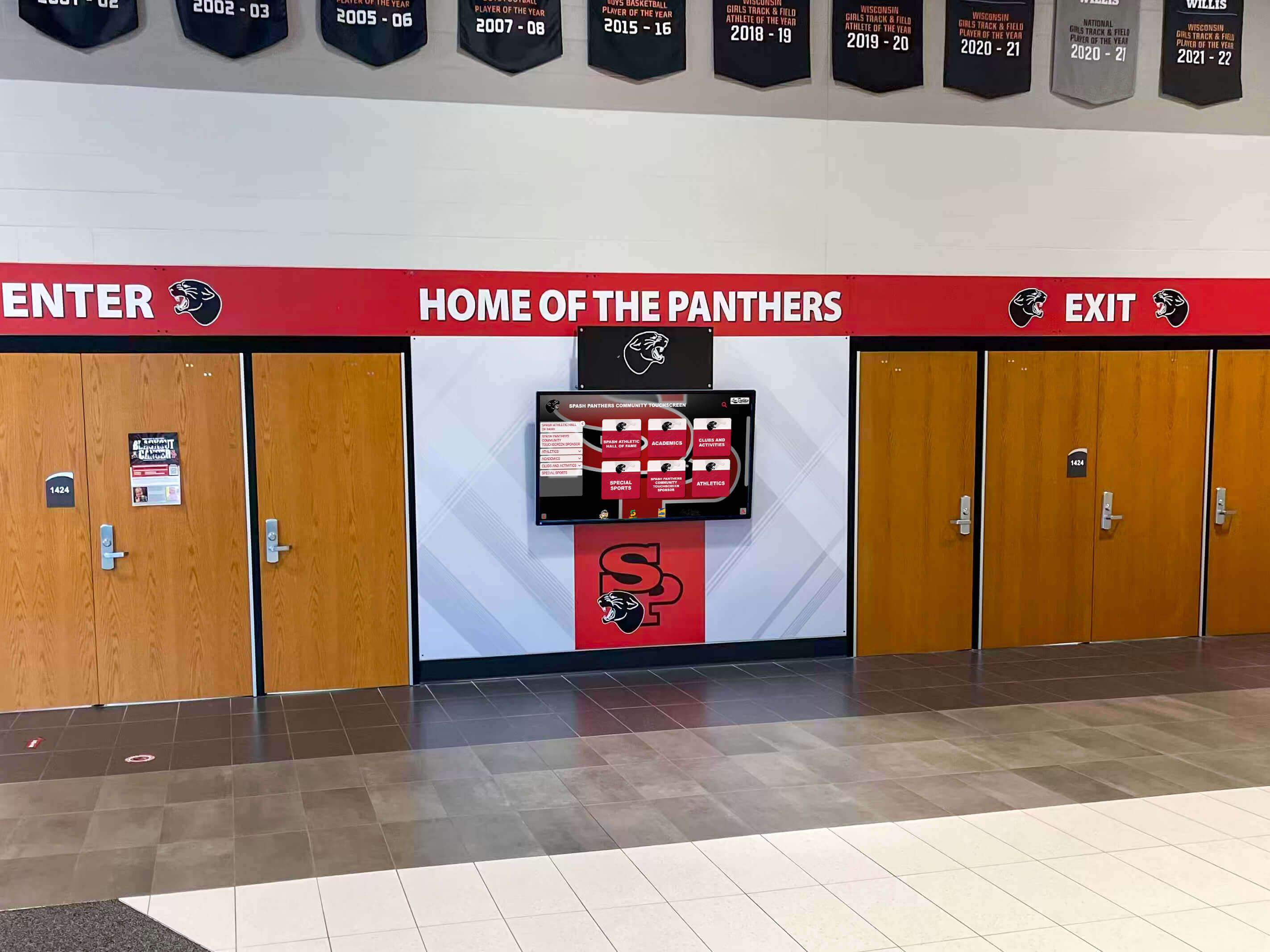
Addressing Common Challenges and Concerns
Even well-designed awards programs face implementation challenges. Anticipating and addressing common concerns helps programs succeed long-term.
Avoiding Recognition Program Pitfalls
Same Students Repeatedly Recognized: Common complaints involve identical students receiving multiple awards year after year while others never experience recognition. Address through:
- Multiple award categories creating diverse recognition opportunities
- Limiting number of awards any single student can receive annually
- Improvement and growth categories accessible to students at different achievement levels
- Deliberate monitoring of distribution patterns identifying overrepresentation
- Category rotation ensuring different achievement dimensions receive emphasis across years
Perceived Favoritism or Bias: Awards programs risk appearing biased when selection processes lack transparency or certain student groups receive disproportionate recognition. Prevent perceptions of favoritism through:
- Clear, published selection criteria applied consistently
- Diverse selection committees with multiple perspectives
- Documentation of specific accomplishments justifying each award
- Multiple nomination sources beyond individual teacher favorites
- Regular review of distribution patterns across student demographics
Exclusive Rather Than Inclusive Culture: Recognition should inspire rather than discourage. When students perceive awards as impossible to achieve, programs become demotivating. Create inclusive recognition through:
- Multiple award categories and achievement levels
- Recognition for improvement and effort alongside absolute achievement
- Celebration of diverse talents across academic, artistic, athletic, and character domains
- Clear pathways helping all students understand how they could earn recognition
- Sufficient recognition volume ensuring most students know peers who received awards
Administrative and Time Burden: Programs consuming excessive staff time often become unsustainable, leading to inconsistent implementation or eventual abandonment. Manage workload through:
- Digital platforms automating nomination, selection, and documentation processes
- Clear, streamlined procedures reducing unnecessary complexity
- Designated program coordinators rather than adding responsibilities to already-overwhelmed teachers
- Student involvement in content creation as authentic learning
- Efficient workflows for photography, profile creation, and ceremony planning
Maintaining Meaningful Standards: When too many students receive recognition or standards become too low, awards lose motivational value. Maintain meaningful recognition through:
- Consistent application of established criteria regardless of pressures to include more students
- Periodic criteria review ensuring standards remain appropriately rigorous
- Quality over quantity in recognition volume
- Focus on genuine accomplishments requiring effort rather than mere participation
- Willingness to have some years with fewer recipients when fewer students meet criteria

Managing Sensitive Situations
Students Not Receiving Expected Recognition: Disappointed students or families sometimes question why expected awards weren’t received. Handle sensitively through:
- Transparent criteria allowing students to understand requirements
- Private conversations explaining specific factors when appropriate
- Encouragement emphasizing continued effort and future opportunities
- Clear communication that awards represent one form of acknowledgment among many
- Ensuring regular, informal recognition happens alongside formal awards
Controversial or Disputed Selections: Occasionally selection decisions generate controversy or questions. Address through:
- Clear documentation supporting all selection decisions
- Selection committee consensus rather than single-person decisions
- Appeals processes for addressing legitimate concerns
- Willingness to acknowledge and correct genuine errors
- Communication with affected students and families when appropriate
Conclusion: Building Culture Through Meaningful Recognition
Student awards programs represent far more than annual ceremonies and certificates. When implemented thoughtfully, these programs create consistent recognition systems that validate diverse achievements, motivate student excellence and effort, reinforce positive behaviors and character development, build school pride and community connection, preserve institutional history and inspire future students, and establish cultures where all students feel valued and see pathways to success.
Effective modern awards programs balance tradition with innovation, honor absolute achievement alongside growth and improvement, celebrate academic excellence while recognizing character and citizenship, maintain meaningful standards while creating inclusive opportunities, leverage digital technology for engagement and preservation, and provide both immediate impact and long-term cultural influence.
The most successful student awards programs share common characteristics: comprehensive categories celebrating multiple forms of excellence, clear and transparent selection criteria applied consistently, engaging presentation formats resonating with contemporary students, meaningful preservation through modern digital displays, authentic acknowledgment with specific accomplishment descriptions, inclusive approaches ensuring all students see recognition pathways, strong connections to school values and educational missions, active family and community engagement, continuous improvement based on evidence and feedback, and sustained commitment across leadership changes and budget pressures.
Key Principles for Awards Program Success:
- Establish comprehensive award categories celebrating diverse achievement types
- Create clear, transparent criteria balancing standards with accessibility
- Implement modern digital platforms engaging students and preserving recognition permanently
- Provide specific, authentic acknowledgment rather than generic praise
- Monitor distribution patterns ensuring equitable recognition opportunities
- Connect awards explicitly to school values and character development
- Engage families and communities in recognition celebration
- Integrate awards with broader positive culture initiatives
- Assess effectiveness and continuously improve based on evidence
- Maintain sustained commitment as core component of school culture
The investment schools make in recognition programs pays dividends through student motivation, behavior, achievement, school connection, and community pride. Recognition communicates that schools notice students, value their efforts, celebrate their successes, honor diverse forms of excellence, and believe in their potential. During formative years, consistent recognition helps students develop positive identities, understand diverse forms of success, internalize important values, and feel genuinely connected to school communities.
Ready to transform how your school celebrates student achievement? Modern solutions like Rocket Alumni Solutions provide comprehensive platforms designed specifically for educational recognition, offering intuitive content management, engaging interactive displays, unlimited digital space for award recipients, and proven approaches that help schools build the positive recognition cultures students deserve.
Your students achieve remarkable things every day—meaningful awards programs ensure those achievements receive the celebration that inspires continued excellence, honors diverse talents, and builds communities where all students thrive.



































